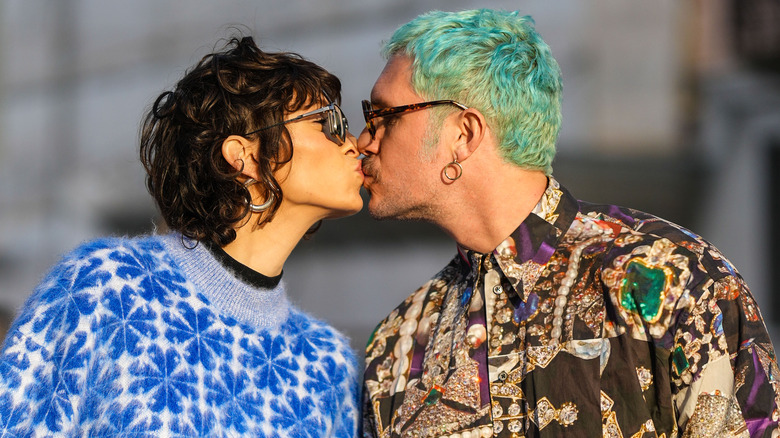Relationship Growth Spurt: Positive Sign Or Glaring Red Flag?
Although no two relationships are the same, where relationships have something in common is that they change over time. Not only do the stages of love affect the partners and the relationship, but what's going on outside the relationship has an effect too. You can't expect the relationship you have with your partner at 25 to be the same one you have at 35, 45, or 55. Too much happens along the way, and no one can squeak by in life without being jostled about occasionally.
But sometimes big changes happen in a small amount of time. While some relationships are lucky enough to experience change gradually over the years, other relationships get tossed a bunch of curve balls in a matter of months. It's this type of rapid shift that can rock a relationship, causing both partners to examine who they are and what they want. It's at this point that your relationship has hit a growth spurt, so now it's time to re-evaluate your partnership and how you plan to proceed together.
What's a relationship growth spurt?
If you think back to your tweens, you can probably recall having a growth spurt. Within a matter of a year or two, you grew several inches, developed body hair in places you didn't have it before, your voice changed, you suddenly needed a bra, and you were forced to realize there's no going back. Things were forever altered, and there was no undoing those alterations — no matter how much you may have wanted to rip them apart at the seams.
"Everybody has a growth spurt, when the growth rate more than doubles over a year or two," University of Virginia pediatrician Dr. Alan Rogol tells Fatherly. "It's always the same. What's problematic is when it occurs."
Like the growth spurt that comes with puberty, relationships can have their own version of a growth spurt, and like those with young teens, it's when it happens, it can be confusing. If it happens early, it can make you wonder if your relationship can handle all these changes that are happening so quickly. If it happens a few years into the relationship, you're likely to handle the shift better, but you're still curious as to how your partnership will survive it. You're not 100 percent comfortable in your skin or completely secure in the relationship, and things can feel a little awkward. But this isn't a bad thing.
Why does it happen?
Change is an inevitable part of life. Humans change, animals change, seasons change, the weather changes, and even the color of your favorite pair of jeans changes with enough washes. You can't escape change, and a growth spurt is just one example of change — a change that's pretty much on steroids but a change all the same.
When a growth spurt occurs in a relationship, it just means that one or both partners have evolved and are headed in a new direction. This could be because of a new job, different friends, new thoughts and opinions, or just the simple fact that people grow up, grow older, and change in the process of it all. Change is a good thing. It means you've learned something about yourself and the world, and you've leaned into that new knowledge, and your relationship has experienced a shift because of it. No relationship can stay the same from day one to day 4008, but what makes a relationship growth spurt feel a bit scary is that it happens so fast.
Is it a red flag?
No. A relationship growth spurt isn't a red flag. Instead, it's a positive sign for your relationship as well as for you and your partner. If you fall in love with someone when either you or they are on the brink of a big change, like graduating from college, getting a new job, or having a baby, you can't expect your relationship to not be affected. Your relationship is just as vulnerable to outside forces as it is to internal ones.
Monumental milestones in one's life are going to cause a growth spurt in a relationship. And, like when you had your growth spurt as a kid, it may not be pretty and may not feel very good, but it's not permanent. On the other side of the spurt are calm waters. It's just a matter of realizing that all these changes in a short time are necessary to get to the next stage of your relationship.
How to deal with it
The first step in dealing with a growth spurt in a relationship is acknowledging it. You can't stand in your relationship mid-growth spurt and pretend it's not happening. Next, you want to talk to your partner about the changes that have occurred, what they mean to the relationship, and how they're affecting both of you. Although change is a good thing, at least in most cases, it doesn't mean that it can happen without your lives being temporarily shaken up a bit. Sometimes things need to be shaken.
Talk to your partner about the growth spurt, listen to what they have to say, and share your thoughts. If you need to modify parts of your relationship to reflect the change that has happened, then do that. If you're unsure as to how you can make the growth spurt work in a positive way, then consider working with a couples therapist. As long as you understand this part of your relationship is normal, temporary, and a good sign that there's been a healthy evolution, then there's no need to see a growth spurt as a bad thing.




